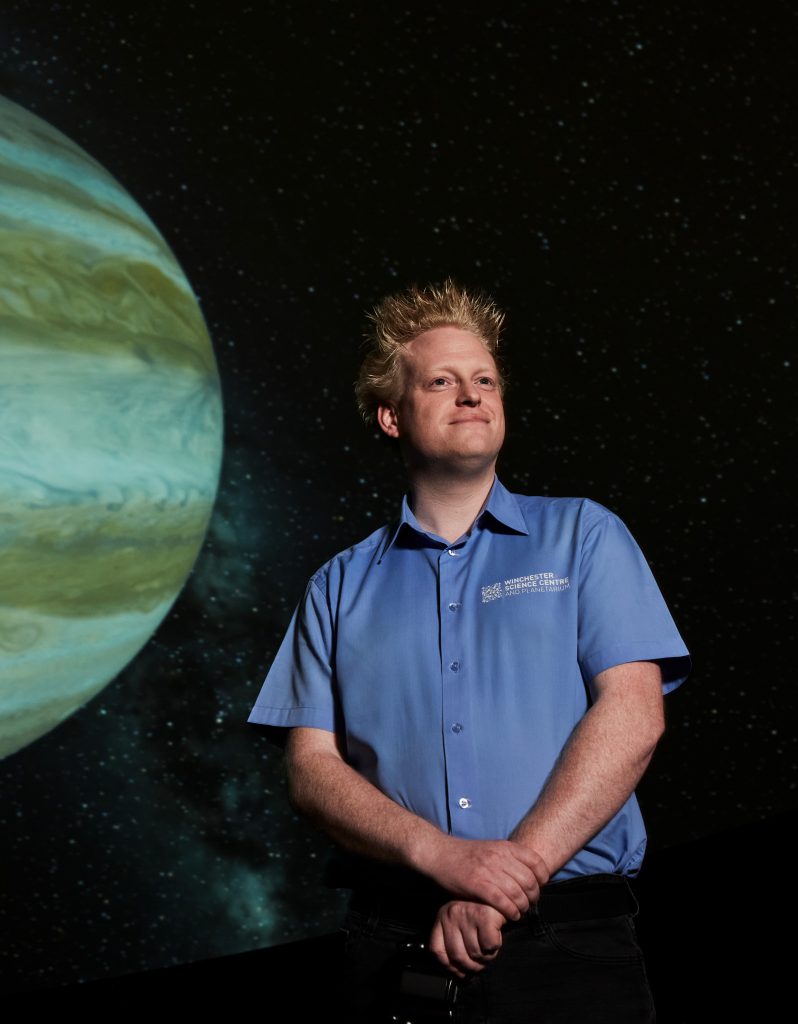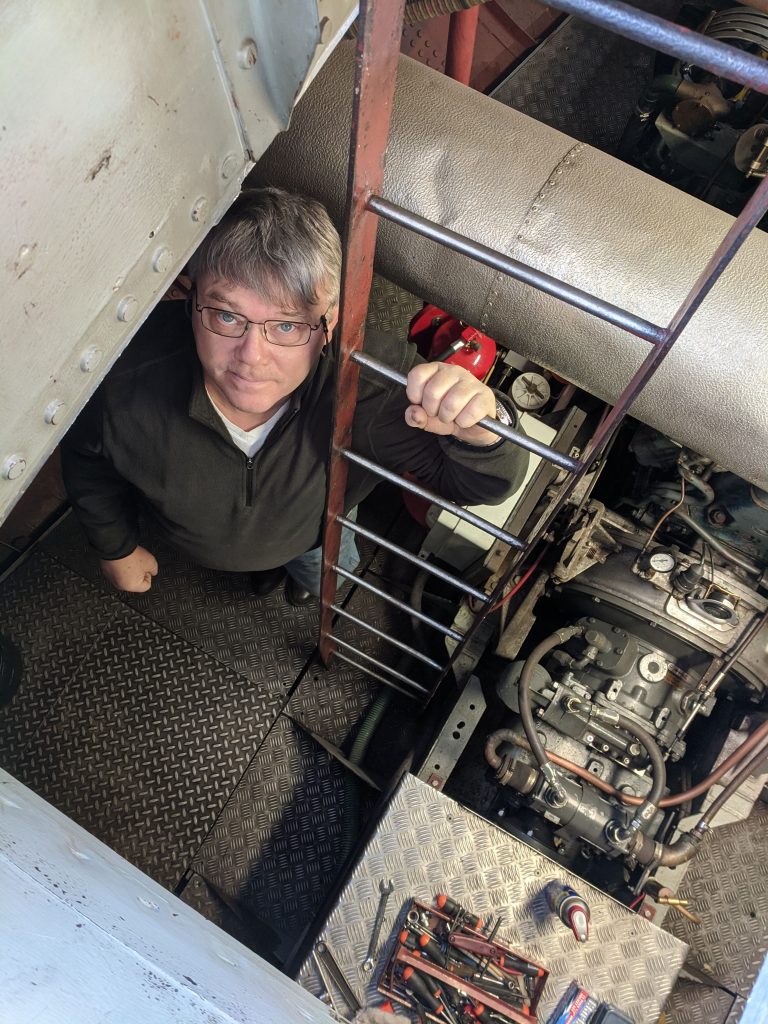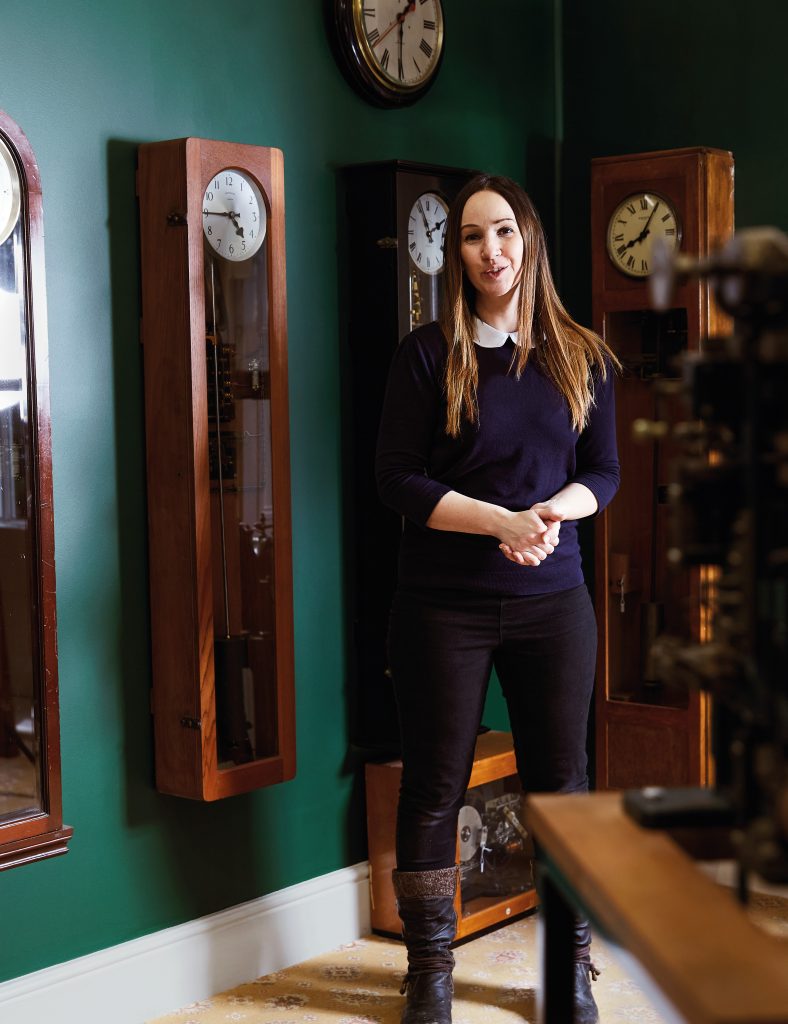Elbow grease
As a young boy, Mark Watson used to gaze up at the night sky and wonder what on earth was going on in outer space. Today, thanks in no small measure to an out-of-this-world posting at Winchester Science Centre and Planetarium, he has a better idea than most of what’s happening in the heavens.
The self-confessed science nerd discovered his true vocation while volunteering at an astronomy summer camp for young stargazers in the Rocky Mountains in North America.
“I had studied a lot of astrophysics and I discovered the joy of science communication through things like micro-gravity training in a swimming pool, helping kids build a satellite while underwater,” Watson says.

As a result, he embarked on his own mission to explain, working in science centres around the UK before landing in Winchester four years ago to escort space cadets on trips across the universe in the state-of-the-art planetarium.
“It’s like a digital cinema in a dome and the sights and sounds are all around you,” he says. “We have five laser-phosphor projectors with computer systems linked to a central server, providing 360° pictures with digital sound. A software upgrade last year enables us to fly visitors through a virtual universe in real time based on scientific data and imagery from spacecraft.
“Like all technology, it needs maintenance all the time, which involves a lot of coding, so it’s useful that my master’s course covered all that methodology.”
The system is so intuitive, says Watson, that any member of staff can fire up the mothership and propel visitors to infinity and beyond at the push of a couple of buttons. At the start of each day, it automates its own calibration checks and Watson fine-tunes the set-up every week to ensure that the moon, planets, galaxies and satellites are in focus.
“One of the projectors may start to drift because of temperature changes or someone in the audience accidentally bumping into it,” says Watson.
“I spend a lot of time programming accessibility features such as subtitles and alternative listening systems as well as providing tactile resources to enable people with hearing or visual impairment to enjoy the experience.”
At the end of a busy day in simulated outer space, Watson still surveys the skies on his return voyage home. “When I was younger, I just saw lights in the sky. Now, I look up and wonder what will happen to the sky if Betelgeuse goes supernova.”
A simple plaque reveals why the Queen Boadicea II (QBII) is no ordinary passenger boat taking pleasure seekers up and down the Gloucester and Sharpness Canal from its base at the city’s National Waterways Museum.
The shiny plate reads “Dunkirk 1940”, which reveals that the 84-year-old vessel – originally a leisurely mode of transport along the Thames in the 1930s – was one of the infamous 850 “Little Ships” called into action to rescue more than 330,000 stranded allied soldiers from Dunkirk in France during what’s been called Britain’s darkest hour of the second world war.
Records show that the makeshift QBII crew, despite heavy shelling from enemy air attacks, were able to rescue not only soldiers from the harbour but also three personnel from another motorboat that had suffered a direct hit.
“Taking the past into consideration, it’s in pretty good condition, but things have been changed over the years with entire decks replaced and large sections of the hull replated,” says Chris Ray, the man now charged with keeping the boat shipshape and Bristol fashion.

“We have installed a wheelhouse and a canopy, neither of which it previously had because Thames boats needed a low height profile to be able to sail under the bridges so were kept open to the elements.”
Ray has been doubling his efforts of late to make sure the boat looks its best in time for the 80th anniversary of the Dunkirk evacuation. It’s just as well he arrived at the museum with a good deal of engineering experience and a penchant for working outdoors.
“My last job was in youth and community work. I was qualified on small boats and used to help the young people build and race hovercraft,” says the skipper, who now supervises the maintenance that is essential for keeping a public passenger service boat afloat.
“All checks of oil levels and seacocks are signed off every day, because every year we are inspected by the Maritime and Coastguard Agency and it’s a continual battle to not only keep the vessel’s rust and deterioration in check, but also maintain pace with the ever-changing regulations for the passenger licence.”
The timber period fixtures and fittings are repaired on a make-do-and-mend basis, he adds, while components for the original Gardner engine are in relatively good supply thanks to the marine industry’s network of small companies manufacturing heritage spare parts.
As he pilots the QBII up and down the canal, Ray regales daytrippers with tales of messing about on the river and wartime derring-do. “A sense of history adds to the journeys because there’s not a vast amount to see. You’re not exactly going past the Great Pyramid of Giza – it’s just trees and the Gloucester suburbs.”
Stephen Loftus, a former fine art student, discovered he enjoyed getting his hands dirty with grease rather than oil paint while working in a garage.
“I’ve always had an interest in old vehicles and have had my own projects at home as well as in the museum,” he says. “I really enjoy the challenge of keeping them working.”
The 20 or so vehicles he regularly services for special events and displays include a 1937 Rolls-Royce 25/30, an Austin 7 van and two sporty models made by the Northern Ireland car companies Crosslé and McCandless.
Recent restorations – now only carried out on the most exceptional vehicles – have included a 1900s Quadrant bicycle fitted with shaft drive and a 1924 Rolls-Royce 20, which was converted into a hearse in the mid-20th century.
“The bicycle had been poorly restored after a front-end shunt many years ago with some non-original parts from the wrong era and the Rolls was too far gone to be displayed,” says Loftus. “The car was a big project as it was very corroded, infested with woodworm and generally daunting in its scale. It was mechanically poor, too, as the crankshaft had broken.”
Most day-to-day maintenance centres around the Folk Collection, he adds. “I repair stoves, fires, furniture and domestic objects, which are used for demonstration purposes. Fixes can be tricky at times, especially if cast-iron welding is required.”
In contrast to its supersonic sojourns across the Atlantic, the final journey of the Concorde G-BOAA to its current resting place at the National Museum of Flight in East Lothian happened in significantly slower motion. The trip – out of Heathrow airport and along the Thames, around the east coast of Britain and across muddy farmland by boat, barge and transporter – took the best part of two weeks.
“I remember seeing people’s expressions as the Concorde fuselage and nose – the delta wings had been removed for the journey – inched their way through London streets at 6am,” says Stuart McDonald, a member of the removals team.
For the final leg of its journey, G-BOAA shuffled along one-and-a-half miles of aluminium track laid by the army across a farmer’s field, with a last-minute diversion to avoid a protected badger sett.
Then it was up to McDonald and his team to reassemble the biggest ever model aeroplane kit, a challenge he was prepared for by his previous career as an airframe technician in the Royal Air Force.
“The Concorde had no floors or seats, but the biggest job was fixing the wings back – they weighed three-and-a-half tons each,” he says.
The plane’s upkeep includes six-monthly checks for tyre pressure and deterioration, and it recently underwent its twice-yearly spring clean with staff scrubbing the paintwork and British Airways livery. using elevated platforms.
“We have planes outside, including a Vulcan and a Comet, which are susceptible to the weather, but there are plans to construct an off-site building to bring them indoors,” says McDonald, whose team is responsible for science and technology exhibits across all of the sites run by National Museums Scotland. The items they look after include replica locomotive, beam engine models and a rather striking artwork.
“The Millennium Clock in the National Museum of Scotland is rather macabre; it’s 12 metres tall, weighs five tons, is covered in strange carvings and is full of clanking chains, bits of old washing machines and pushbike wheels to give the illusion of movement. We’ve kept it running for 20 years, which is probably longer than the artists intended.”
During her years as a wedding planner, Alex Bond ensured everything ran like clockwork – appropriate grounding for someone whose future lay in a museum dedicated to keeping time. “After too many nerve-racking 16-hour days, I figured I could use my organisational skills in other areas,” says Bond, a history graduate and heritage buff who did a museums studies course and then heard about a timely opportunity at the British Horological Institute in its delightful village setting.
“I didn’t know what horology meant,” she says. “When I looked it up, I thought it sounded interesting, even though I had not looked after a collection before and was a novice when it came to clocks and watches.”
Nevertheless, she was seconded to bring the museum and its hundreds of objects up to date. A major gallery refurbishment to include more hands-on activities is under way and Bond has become a dab hand at ensuring everything is ticking over correctly.

“While most of the clocks are not wound over the winter for conservation reasons, I wind around 60 of them once a week during the summer; some of them are 300-year-old bits of furniture so you have to be careful,” she says. “The process is a contentious issue: should you keep mechanical objects stationary or allow them to run? We decided to run them as it’s a major part of the visitor experience. We have 30 long-case clocks around the grand hall that chime hourly, half-hourly or on the quarter. It’s quite a show when you’re in there at midday and they’re all going off at once.”
The longevity of old chronometers – many of which are beautiful works of art – is a delight for visitors, Bond says.
“People often remark that very little of what is made today is built to last like that; they also seem to form an emotional attachment to clocks, which you see when memories flood back during a visit or when families sign their ancient family timepieces over to us. It’s as if the pendulum was the heartbeat of their grandparents’ home.”
One of Bond’s trickier assignments is the maintenance of a clock made by the 17th-century English designer and inventor Joseph Knibb – “It dates from 1675 and is difficult to wind as there are often issues with the ringing mechanism. We were recently visited by Knibb’s several-times-great grandson and it was a delight to introduce him to his ancestor’s masterpiece.”
Twice a year, Bond has to wind the clocks forwards or backwards by an hour; the switch to British summer time would normally mark the reopening of the Grade II-listed museum after its winter hibernation period.
“Adjusting the clocks forward by an hour is straightforward as I simply turn the hands around,” she says. “But when the clocks go back in the autumn each one must be taken forward a full revolution of 11 hours and that can take me a full day. They all have their own keys and winding cranks. In the early days, I used to worry about which went with what, but now I just have to glance in the box to find the correct one.”
All interviews by John Holt